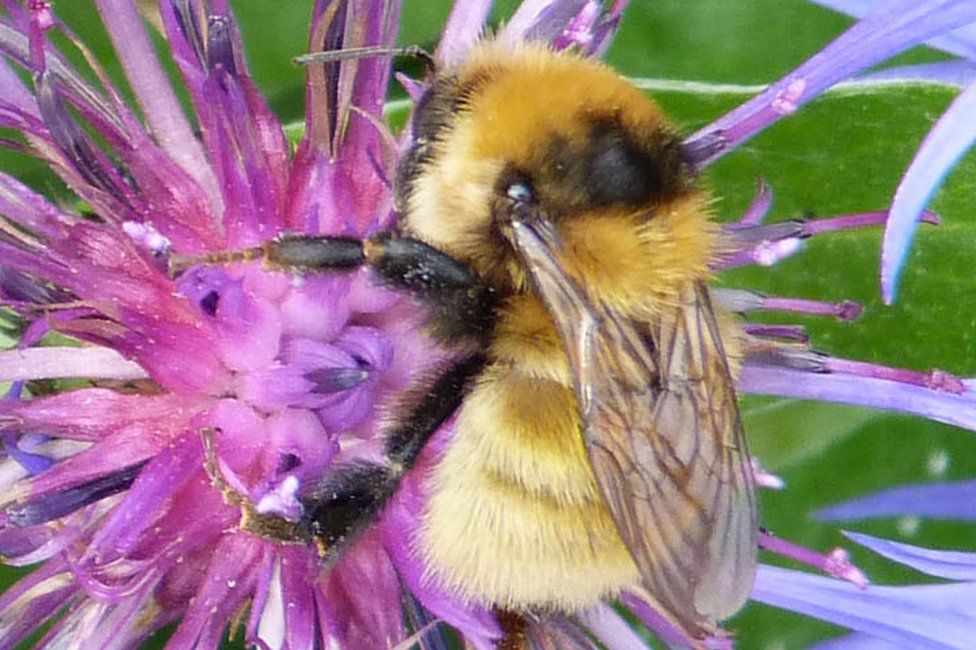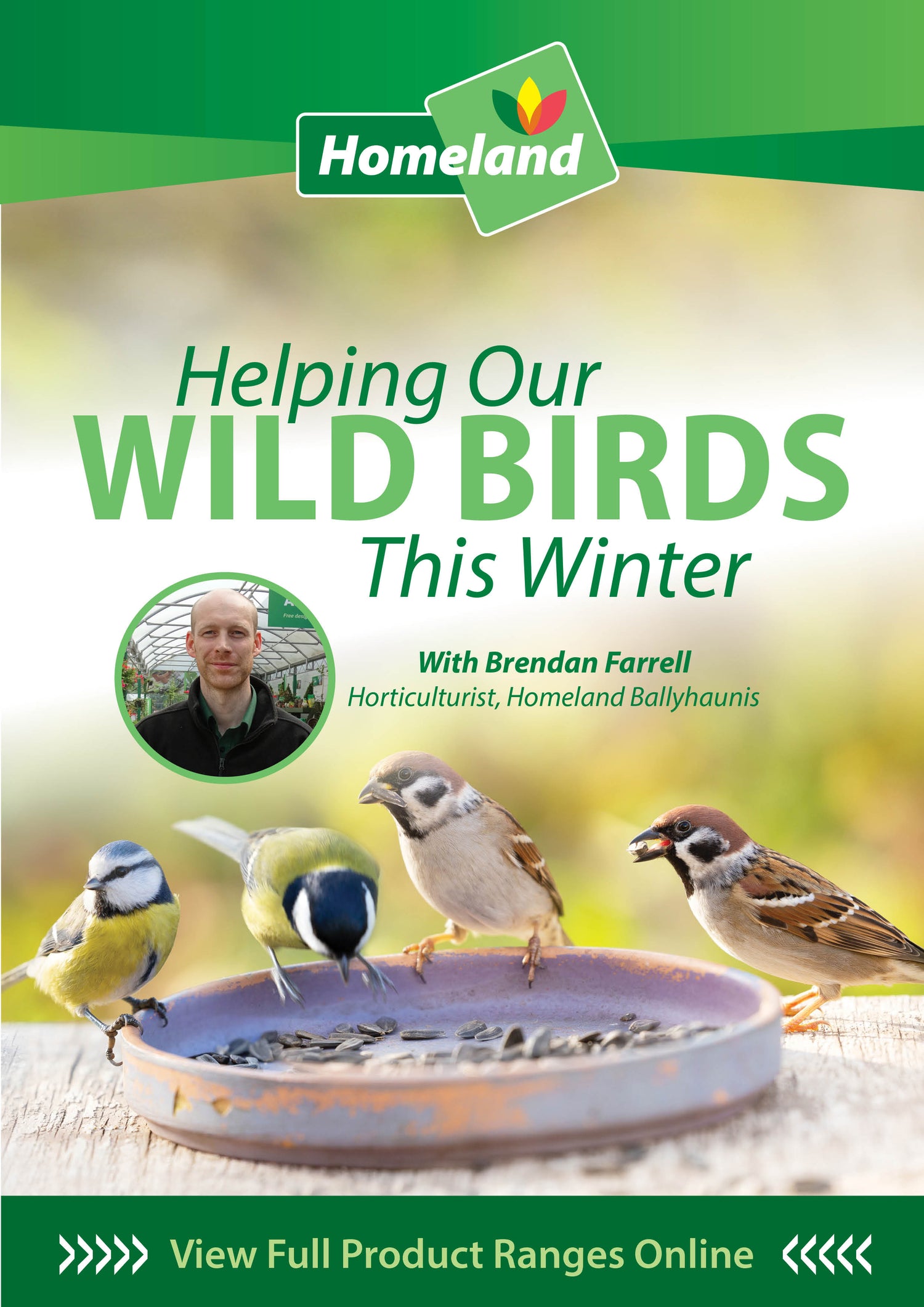The Great Yellow Bumblebee (Bombus distinguendus), is Ireland’s rarest bumblebee species and is currently classified as ‘Endangered’ on the Irish Red List, and ‘Vulnerable’ at a European level.

The Mullet Peninsula and possibly coastal habitats of the Erris mainland in County Mayo holds what is probably the only remaining healthy population of this species in Ireland.
Loss of flower-rich meadows and changes in agricultural practices has contributed to an 80% decline in distribution of this bumblebee in the last century.
The project team includes farmers, local representatives of Belmullet Tidy Towns, Agri-advisors, an Ecologist, BirdWatch Ireland, Mayo County Council, NPWS, Teagasc and School of Agriculture and Food Science, University College Dublin.
Homeland & Aurivo are proud to announce that we will be supporting this project through the sponsorship of bee-friendly plants to the local community. We will be providing apple trees to 5 of the local schools, a mix of shrubs, perennial flowers and herbs to Belmullet Tidy Towns and some bags of multi sward grass mix for reseeding on a local farm.
‘Pollinators are enormously important to agriculture, food systems and ecosystems. The majority of flowering plants need pollinators and consequently pollinators play a key role in supporting food production, habitats and natural resources. Wild pollinators are declining in occurrence and diversity due to the loss of habitats and increased usage of herbicides and pesticides. The Great Yellow Bumblebee is one such species that is endangered in Ireland. It’s important that we help provide suitable habitats for pollinators such as the Great Yellow Bumblebee, so that they can survive and thrive once more.’ Brendan Moran - Sustainability Project Lead, Aurivo Co-Operative Society
How to recognise the Great Yellow Bumblebee
The Great Yellow Bumblebee is one of our largest bumblebees. Queens can be up to 2cm in length and entirely covered in bright yellow hairs (becoming pale mustard-yellow as the summer progresses) with a distinctive band of black hairs on the thorax. Queens, workers and males all have this banding pattern.

What the Great Yellow Bumblebee needs!
- Suitable nest sites
The Great Yellow Bumblebee generally nests underground using warm, sheltered areas with small mammal burrows, typically in tussocky grasslands and vegetated sand dunes. Winter-grazed or unmanaged grass that has a tussocky structure is ideal. The sides of the tussocks exposed to the sun are the most attractive for nesting. Nests can also be found in earthen stone walls.
- A supply of pollen and nectar throughout the season
The Great Yellow Bumblebee’s foraging habitat is extensive flower-rich grassland, characterised by an abundance of Red Clover, Bird’s-foot trefoil, White Clover and other legumes in June, followed by Common Knapweed in later summer and autumn. Current estimates are that the workers bees typically fly ca. 0.4 – 1 km from their nest to forage. Therefore, establishing swards with suitable flowers within 1 km of habitat that will support nests throughout their lifecycle should be a priority.

- Suitable hibernation sites
Overall, very little is known about hibernation sites for the Great Yellow Bumblebee, but it is thought to include loose soils under grass tussocks or deep within the plant litter. As with many other bumblebee species, undisturbed north-facing banks of loose soil may also be used.
What can we do to help?
- Delay mowing flower rich grassland until late September – this will maximise the number of flowers for foraging before hibernation.
- During mowing, leave field margins or areas uncut to provide grassy tussocks throughout the winter and the following summer.
- Create small patches of flower-rich habitat along areas such as field margins by either using the green hay technique (spreading freshly cut seeding flower-rich grass from nearby) or by spreading specific native wildflower seed mixes, especially those that contain important foraging plants such as Red Clover.
- Eliminate the use of organic or inorganic fertilisers, pesticides or herbicides on these patches.
- Plant pollinator friendly perennials in your garden!
You can find some tips on pollinator friendly plants to look out for here!
Or, ask our team at your local Homeland Garden Centre for more information on bee friendly gardening tips!
Mayo
- Homeland Ballina
- Homeland Ballinrobe
- Homeland Ballyhaunis
- Homeland Claremorris
- Homeland Castlebar
- Homeland Swinford
- Homeland Plus Westport
Sligo
- Homeland Rathscanlon
- Homeland Plus Sligo
Donegal
- Homeland Letterkenny
Leitrim
- Homeland Mohill
Roscommon
- Homeland Ballaghaderreen
*Information sourced from the National Biodiversity Data Centre https://biodiversityireland.ie/ & the All-Ireland Pollinator Plan https://pollinators.ie/








